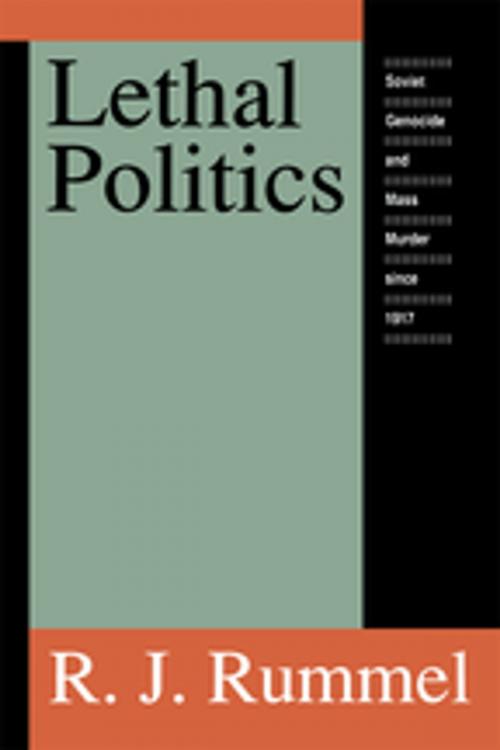Lethal Politics
Soviet Genocide and Mass Murder Since 1917
Nonfiction, Social & Cultural Studies, Political Science| Author: | R. J. Rummel | ISBN: | 9781351508865 |
| Publisher: | Taylor and Francis | Publication: | July 5, 2017 |
| Imprint: | Routledge | Language: | English |
| Author: | R. J. Rummel |
| ISBN: | 9781351508865 |
| Publisher: | Taylor and Francis |
| Publication: | July 5, 2017 |
| Imprint: | Routledge |
| Language: | English |
While there are estimates of the number of people killed by Soviet authorities during particular episodes or campaigns, until now, no one has tried to calculate the complete human toll of Soviet genocides and mass murders since the revolution of 1917. Here, R. J. Rummel lists and analyzes hundreds of published estimates, presenting them in the historical context in which they occurred. His shocking conclusion is that, conservatively calculated, 61,911,000 people were systematically killed by the Communist regime from 1917 to 1987.Rummel divides the published estimates on which he bases his conclusions into eight historical periods, such as the Civil War, collectivization, and World War II. The estimates are further divided into agents of death, such as terrorism, deportations, and famine. Using statistical principles developed from more than 25 years of quantitative research on nations, he analyzes the estimates. In the collectivization period, for example, about 11,440,000 people were murdered. During World War II, while the Soviet Union had lost almost 20,000,000 in the war, the Party was killing even more of its citizens and foreigners-probably an additional 13,053,000. For each period, he defines, counts, and totals the sources of death. He shows that Soviet forced labor camps were the major engine of death, probably killing 39,464,000 prisoners overall.To give meaning and depth to these figures, Rummel compares them to the death toll from'major wars, world disasters, global genocide, deaths from cancer and other diseases, and the like. In these and other ways, Rummel goes well beyond the bare bones of statistical analysis and tries to provide understanding of this incredible toll of human lives. Why were these people killed? What was the political and social context? How can we understand it? These and other questions are addressed in a compelling historical narrative.This definitive book will be of interest to Soviet experts, those inte
While there are estimates of the number of people killed by Soviet authorities during particular episodes or campaigns, until now, no one has tried to calculate the complete human toll of Soviet genocides and mass murders since the revolution of 1917. Here, R. J. Rummel lists and analyzes hundreds of published estimates, presenting them in the historical context in which they occurred. His shocking conclusion is that, conservatively calculated, 61,911,000 people were systematically killed by the Communist regime from 1917 to 1987.Rummel divides the published estimates on which he bases his conclusions into eight historical periods, such as the Civil War, collectivization, and World War II. The estimates are further divided into agents of death, such as terrorism, deportations, and famine. Using statistical principles developed from more than 25 years of quantitative research on nations, he analyzes the estimates. In the collectivization period, for example, about 11,440,000 people were murdered. During World War II, while the Soviet Union had lost almost 20,000,000 in the war, the Party was killing even more of its citizens and foreigners-probably an additional 13,053,000. For each period, he defines, counts, and totals the sources of death. He shows that Soviet forced labor camps were the major engine of death, probably killing 39,464,000 prisoners overall.To give meaning and depth to these figures, Rummel compares them to the death toll from'major wars, world disasters, global genocide, deaths from cancer and other diseases, and the like. In these and other ways, Rummel goes well beyond the bare bones of statistical analysis and tries to provide understanding of this incredible toll of human lives. Why were these people killed? What was the political and social context? How can we understand it? These and other questions are addressed in a compelling historical narrative.This definitive book will be of interest to Soviet experts, those inte















